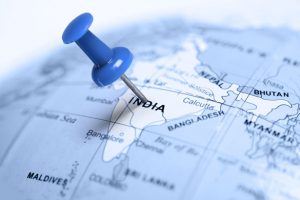Why Narendra Modi’s Landslide Victory is Good for the Economy but Bad for India
It almost sounds like an oxymoron, doesn’t it: how can an event be good for the economy but bad for the country?
Need buying strategies for steel? Request your two-month free trial of MetalMiner’s Outlook
As former President Bill Clinton’s campaign strategist James Carville quipped, “it’s the economy, stupid,” meaning if the country is doing well then everyone benefits, and that that’s all voters care about.
Where better to focus solely on the economy than the second-most populous country in the world that is still ranked only No. 124 on the list of wealthiest countries by Global Finance?
Narendra Modi’s Bharatiya Janata Party (BJP) has its critics, even regarding the economy. While there have been failings, there have also been significant gains, some of them not so readily reflected in GDP figures.
Anyone accustomed to dealing in India will attest to the transformation in business attitudes and practices over Modi’s first term. Corruption has been tackled head-on; further work needs to be done, but the landscape is changing fast to the benefit of both domestic consumers and foreign firms trying to do business there.
Decision-making in a notoriously bureaucratic country has also significantly improved. Middle-ranking officials still prevaricate, a national pastime only exacerbated by the clampdown on corruption as lesser officials fear to make decisions on their own. But the more dynamic individuals, both in private and public office, have risen faster and meritocracy is overtaking political connections, with the cream rising to the top as a result.
So, more of the same should be good, right?
Well, India still faces considerable challenges, as Edward Luce recently wrote in his Financial Times Swamp Notes.
India is facing serious economic challenges, including slowing growth, a persistently high fiscal deficit, tepid private investment, and weakness and instability in the financial system.
Modi achieved some gains in his first term, such as introducing universal GST in place of state taxes and the aforementioned clampdown on corruption. However, he remains widely criticized for not doing more to tackle long-standing challenges, such as selling unprofitable state enterprises, relaxing restrictive labour laws, modernizing the land market or tackling the state-dominated banking system.
Such moves, if he had the courage to tackle them, could begin to unlock long-term growth in an economy that has brief spurts of growth, but in the medium to longer term disappoints repeatedly.
It remains to be seen, with a single-party majority, if Modi has the vision and courage to effect real change in these areas.
He has a mandate for change — even 15% of Muslims are said to have voted for the BJP despite its overtly Hindu overtones.
What is worrying is that running as an undercurrent, not just to the election but increasingly throughout the first term, is a progressively more nationalistic, Hindu- centered philosophy that, according to the Financial Times, breaks ranks with the vision laid out by anti-colonial leader Mahatma Gandhi and his political heir Jawaharlal Nehru, the country’s first post-independence prime minister. They believed India’s interests were best secured by a secular state, governing a religiously and linguistically diverse society whose members all had an equal claim as citizens.
The BJP and its close cousin, the right-wing Rashtriya Swayamsewak Sangh, clearly stand for something different.
The RSS was founded in 1925 and is based on the belief India should primarily be a Hindu nation, where the rights of the Hindu majority should trump those of Muslims and Christians, seen as alien religions that pose existential threats to Hindu society, the Financial Times asserts. Modi himself may not be a signed-up member, but BJP President Amit Shah is — and so are many other party leaders.
Much like populist parties elsewhere, the BJP is not averse to bending the truth to present the message it would like its voters to hear.
India’s swift and decisive response to Pakistan’s killing of scores of Indian military personnel earlier this year clearly contributed to Modi’s popularity at the polls, despite the fabrication of the news to suggest terrorist camps had been struck when in reality all the air force managed was to lose a plane and leave two craters in a field.
To be fair to the BJP, such tactics are regularly used, even in the U.S., with “fake news” fighting real news for credibility. However, the extensive use of social media to spread influence has sinister undertones, particularly as it is used as much for promoting a Hindu nationalist agenda as it is simply boosting the party’s standing.
MetalMiner’s Annual Outlook provides 2019 buying strategies for carbon steel
Modi’s majority could be either a great opportunity to force through real economic and structural change, or it could allow the BJP/RSS to push society further toward nationalism and the ostracization of minorities.
Let’s hope common sense prevails. Despite — or rather, because of — the landslide victory, the country has testing times ahead, in more ways than one.



Leave a Reply